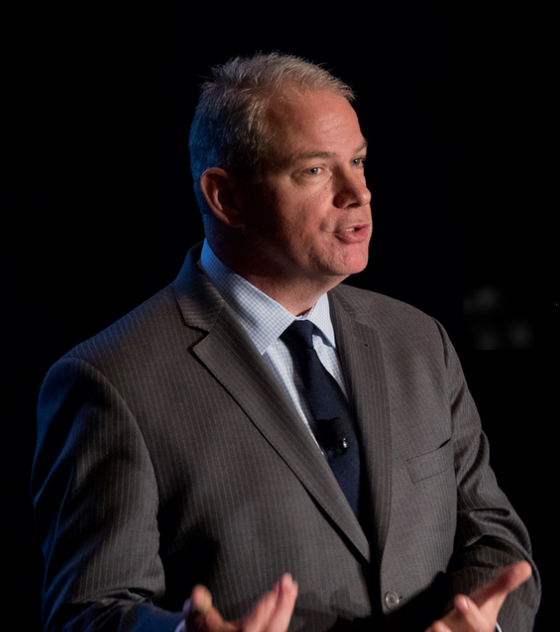ElevateNext 2020 Vision Series: Tim Corcoran Interview
January 09, 2020
Tim Corcoran is a former CEO who advises law firm and law department leaders in the profitable disruption of outdated business models. He’s a past president and member of the Legal Marketing Association Hall of Fame, a Fellow and Trustee of the College of Law Practice Management, a sought-after speaker on the changing law firm marketplace, and author of the widely-read Corcoran’s Business of Law blog.
Tim is, in our view, one the most astute and practical consultants on issues of great importance to law firm and law department leaders. We appreciate his insights
Interview with Tim Corcoran

Q: What do you predict will be the two biggest changes in the legal profession as of 2025 and why?
There are numerous changes taking place within the legal profession, and what constitutes “big” will vary depending on one’s perspective. The expansion of alternative providers and non-hourly fee structures are huge to large law firms, but to many in-house counsel, it’s just another day in the office. The increased frequency of law firm combinations and the widening gulf between biglaw and megalaw create a lot of activity within law departments as they’re constantly shuffling and reshuffling which lawyers and firms are on the naughty and nice lists based on who ends up where. But all of these changes are consequences of upstream changes, to which in-house counsel and eventually outside counsel are forced to react. If we want to predict the future, we need to follow the money.
A big change for 2025 is really just greater magnitude of an existing trend. And that’s the demands placed on the legal supply chain by business management who simply refuse to accept that the legal function is as unpredictable and costly as the incumbents claim. In the first few years following the last recession, buyers simply froze rates or demanded lower hourly rates. Any idiot can squeeze the supply chain, but what CEOs and CFOs want is continuous improvement. So this recent phase has created the need for legal operations, forcing in-house counsel to first define how they add value to the business, and then define how the providers in their legal supply chain accelerate or hinder the delivery of that value. They’re slowly getting better at it, but just as more travelers have not yet ridden in an Uber than have, we have yet to reach the tipping point where more in-house counsel than not are proactively changing their sourcing models. Too many continue to demand the same inefficiency at lower rates rather than demand business velocity.
The global economy is due for its next correction, and the turmoil caused by Brexit, rising tariffs and trade wars, and increasing unrest in the Middle East, Hong Kong, Turkey, and yes, in the US, bring this closer every day. The attention of business management will again turn toward the legal function as they retrench and tighten belts. The tallest blades of grass will be in-house counsel who continue to believe they’re running a captive law firm relying primarily on big expensive traditional law firm brands rather than leading a business function with numerous alternative and substitutes to draw on. If we think the power of the buyer has been noticeable since 2008, we ain’t seen nothing yet.
The second biggest change is being driven by the legal profession. Just as Australia and UK previously relaxed regulations restricting who can deliver legal services, several US states and Canada are exploring the same. To keep it in perspective, buyers of legal services – whether individual consumers or sophisticated corporate buyers – don’t need permission from lawyers or the Bars to procure legal services any way or anywhere they want. So it’s a bit of a misnomer to consider these Bar discussions as “opening up the legal market to non-lawyers” which too many headlines breathlessly bleat. The Bars might very well conclude that the professional lawyer guild is better off declaring the market changes to be invalid, but this will have no impact on the innovative providers, technology companies, and organizations focused on increasing access to justice. But I believe that change willtake place. It won’t happen overnight, but once one Bar makes a move, they’ll all be eager to get in line. Few want to be first in the legal profession, but everyone wants to be first to be second.
The first phase is a split within the Bars – a continuation of the professional guild, protecting its own interests, on one hand, and the emergence of a body truly focused on the needs of the consumer. At present, the needs of the guild take primacy over the needs of the consumer, but the market is ready for some internal competition, and the side paying the bills has a head of steam. It will be refreshing to see more attention paid to addressing client needs, not as a nice-to-have outcome of a happy guild, but as the raison d’être for a guild whose navel-gazing is increasingly irrelevant.
Q: What should be the biggest change as of 2025 but won’t be?
Law firm leaders are increasingly aware not only of the cost of not adapting to the changing market, but of the compelling opportunities that await those who do adapt. However, the pace of change may not accelerate dramatically until the resistant generation releases the reins. This could mean the retirement (or forced obsolescence) of powerful law firm partners who resist any change that creates personal discomfort or short-term economic inconvenience. Hopefully more of them recognize that the risk of inaction is far greater than the risk of adapting. The message loudly shared by the market is “adapt and thrive” but too many misread it as “hold out as long as possible.” Sadly, given the frequency with which I encounter partners who simply don’t understand the opportunity presented by the market disruption, or who simply don’t care because they prefer to “wait it out,” I’m pessimistic that the pace of change from within will reach the necessary velocity. The market will reach its own velocity, however, with or without resisting lawyers.
Q: If you could design something that does not exist right now that you think would be of help to you or the industry in 2025, what would it be?
Literally every law firm I work with claims that most, if not every, legal service it delivers is of high quality. This would be extraordinarily unlikely within each firm, and it’s statistically impossible for every law firm I meet to be the best at everything they do. The increasing role of project management and process improvement on the delivery side, and the rise of legal operations and procurement on the buyer side, are driving us toward a more meaningful, objective, transparent understanding of what quality legal service delivery looks like, how it’s measured, and who – individual lawyers or entire law firms – actually deliver on the quality promise. Using PM and PI, buyers and sellers can actually know does it well.
No disrespect intended to the many lawyer ranking services, but a random selection of client interviews, augmented by a weighty deal list, is simply not a great proxy for assessing a lawyer’s, a practice group’s, or a law firm’s actual quality and capability. What I would like to see is this transparency made more available. Whether a ranking company relies on in-house counsel performance metrics to declare “best of breed,” whether lawyer malpractice carriers set rates based on a law firm’s adoption of PI & PM – practices that are proven to meaningfully improve quality – or whether third party hourly rate comparison tools give way to objective quality metrics, or all of the above and more, whatthe market needs is a way to cut through the marketing noise of “we do everything, and we do it all well” to know explicitly who does what well and at what cost. And while the lawyers and firms claiming expertise in everything might take a bit of a hit, they more than make up for it when the market can truly value and pay for quality.
Q: If the current you could give advice to the future you about anything (doesn’t have to be law-related), what would it be?
The old me was more easily frustrated with the slow pace of change. The current me acknowledges that some players in the market get it and some don’t. So now I simply choose to work with those need help getting started, and I don’t waste energy with those who resist. The older I get, the more eager I am to help rather than to scold, but I think future me will still need to be patient. The legal market is full of smart people and while their slow grasp of what is crystal clear to me (and to many market disruptors) is frustrating, they will come around eventually. When the legal profession finally turns its collective intellect toward advancing the opportunities its currently resisting, it will be a sight to behold. Someday future me will happily embrace being a former change provocateur.
Back to Expertise



